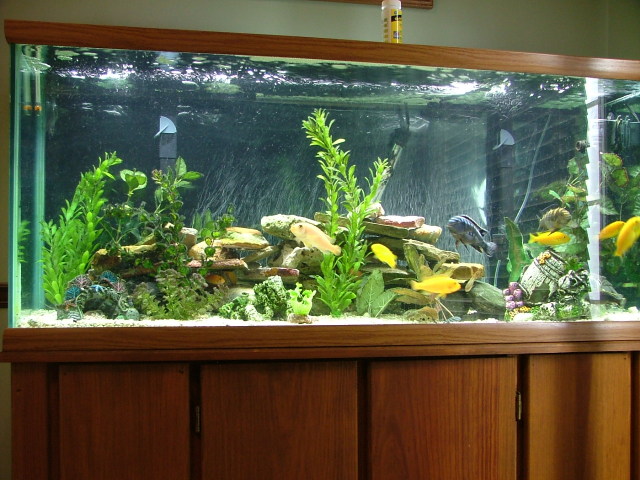Building Your Own Aquarium
In the article I share what I learned about Building Your Own Aquarium. The easiest method to induce started with an aquarium is to get a ready-created tank from a native shop. Aquarium tanks are made of glass or acrylic and return in a very wide selection of shapes and sizes. There’s sure to be a tank that fits your needs. But, if you’re handy and wish to save lots of some cash, you’ll build your own aquarium. This might be an especially attractive choice if you have got a strangely shaped area for your aquarium, and you can’t notice one available that’s simply right.

If you’re going to make a glass aquarium, use ?-inch plate glass, generally referred to as “sheet” or “annealed” glass. If your tank can be taller than 14 inches, then get slightly thicker glass, say ?-inch; for tall, narrow tanks, there can be increased water pressure on the tank walls. Don’t get tempered glass; this may shatter if damaged. The glass look ought to grind the perimeters thus they’re not sharp.
As for sealant, you’ll want a silicone sealant. Product marketed as “aquarium sealant” are more expensive than normal household silicone, but if you’ll notice household silicone while not anti-mildew chemicals, then that’s simply as good and can prevent some money. Be positive that whatever sealant you employ, it does not contain the anti-mildew chemicals, as these can be harmful to fish and different aquatic life. If you’ll insert the silicone tube in an exceedingly caulking gun, application can be that much easier.
In extra to glass and silicone, you’ll would like a caulking gun (if acceptable), duct tape, and some significant, immobile objects to hold pieces of glass in place as the silicone dries. Getting these components on your own, an aquarium tank that might price a few hundred bucks at your fish store will finish up costing you underneath $50.
You must prepare your assembly such that you begin with the bottom pane, then affix so as the front pane, the 2 aspect panes, and the rear pane. For a tank that’s longer (left to right) than it’s deep (front to back), the smaller aspect panes ought to be sandwiched between the bigger front and back panes. Clean the glass edges with acetone or alcohol. And prepare to lay silicone in straight lines that are three millimeters thick. When you chop the top off the silicone tube, guarantee that you’ve got a three-millimeter opening.
Lay the underside pane on a table, and affix strips of duct tape underneath the pane, such that [*fr1] of each piece of tape is stuck to the underside of the pane and the opposite 0.5 emerges from beneath the glass, loose and free on the table. For a little or medium-sized tank, 2 or three items of tape per facet is enough. Have further strips of duct tape cut and prepared to go, for once you raise the sides of the aquarium.
Apply a three-millimeter strip of silicone along the prime of the bottom pane, regarding two millimeters from the front edge. Then affix the front pane, perpendicular to the table, pressing down firmly. Don’t wipe off the excess silicone as it squirts out; you’ll be in a position to chop this away later. You would possibly would like to prop up this front pane with one thing heavy as the silicone dries, but it could stand up on its own. Once it’s in place, fold up the items of duct tape already affixed to the bottom pane therefore they’re currently securely affixed to the front pane as well.
Next, apply a three-millimeter strip of silicone along one aspect of the bottom pane, and an extra strip of silicone along the within vertical edge of the front pane you just installed, along the identical side and a couple of millimeters from the edge, so the horizontal and vertical lines of silicone line up. Remember, the facet panes should be sandwiched between the front and back panes. Affix the aspect pane to both strips of silicone simultaneously. Once this side pane is in place, pull the strips of duct tape up from the bottom as with the front pane, and wrap a few additional strips of duct tape around the aspect, holding the aspect pane together with the front.
Repeat this process for the other aspect pane. And putting in the rear pane will need three strips of silicone: along the back of the bottom pane, and along each within vertical edges of the back pane, all 2 millimeters from the edge. Affix some strips of duct tape around all vertical edges. And if you have a bigger tank — fifty gallons or more — you’ll be able to add additional strips of silicone to the inside vertical edges.
The silicone will dry in less than 24 hours, however it ought to sit for a minimum of twice that long before you do anything with it, and it’s best not to feature water to the tank for a full week. If you notice any leaks along the seams, you can apply extra silicone to plug them up.
Building an acrylic tank is significantly more difficult; you may need further tools, and sourcing suitable acrylic sheeting is additional tough than finding glass. Be positive to analysis any acrylic project totally before enterprise it; if you’re terribly handy and actually get pleasure from home construction comes, then think about it, but don’t expect any value savings over getting a finished tank.



